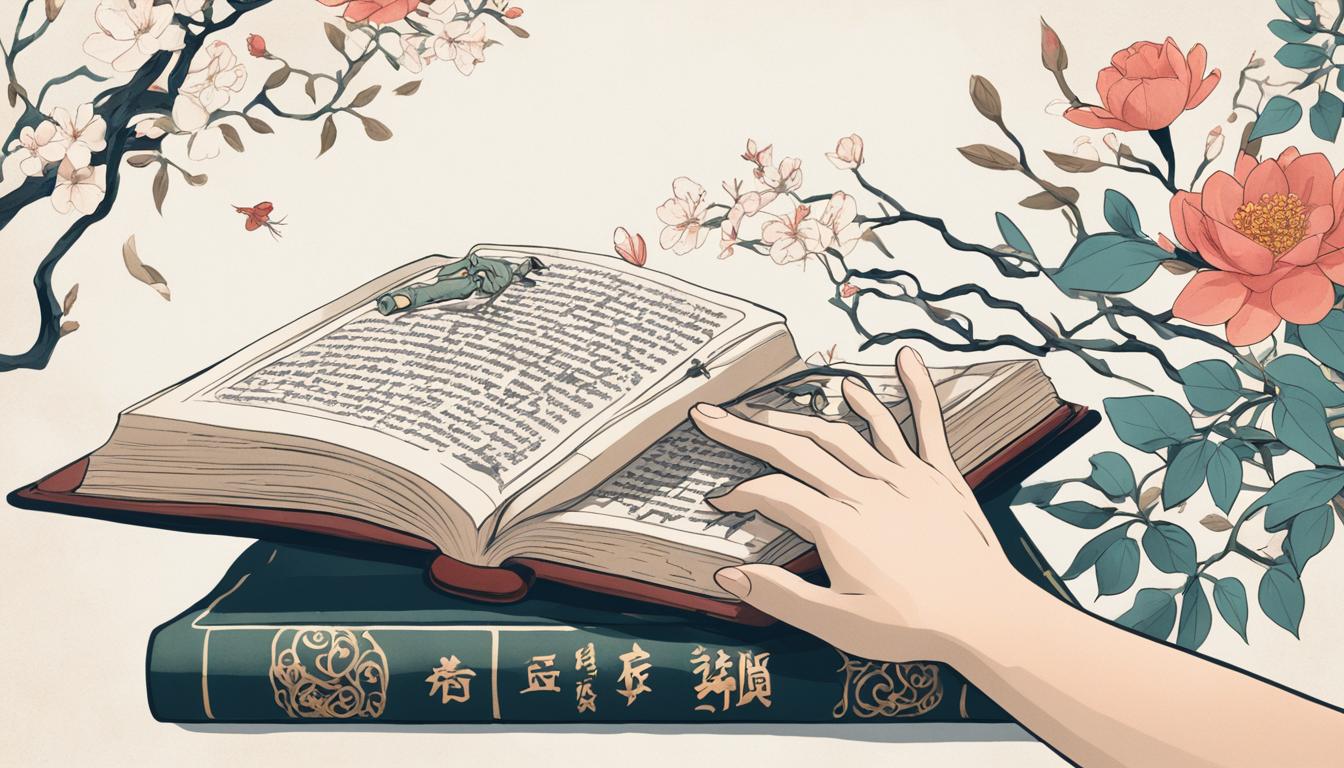Welcome to our audiobook review of “The Bonesetter’s Daughter” by the acclaimed author, Amy Tan. In this review, we will examine the various aspects of the audiobook, including the narrative structure, writing style, cultural background, and the audiobook narrator’s performance.
Amy Tan is a master storyteller renowned for her exploration of the complexities of the Chinese-American experience. This audiobook is an engaging tale of family, identity, and memory set in San Francisco’s Chinatown and rural China. This review will provide an in-depth analysis of the audiobook and its relevance to contemporary readers. So sit back and join us as we explore “The Bonesetter’s Daughter” audiobook by Amy Tan.
Overview of “The Bonesetter’s Daughter”
“The Bonesetter’s Daughter” is a novel written by Amy Tan that explores themes of family, cultural identity, and the power of storytelling. The book follows the life of Ruth, a Chinese-American woman, and her complicated relationship with her mother LuLing, who immigrated to America from China. The story is told through alternating perspectives, chronicling LuLing’s past in China and her strained relationship with her daughter in the present day. Through the novel, Tan weaves together a poignant tale of cultural and generational divides, ultimately showing how the stories we tell can heal or harm.”
Plot Summary
Ruth, a successful ghostwriter in San Francisco, struggles with her ambivalent feelings toward her difficult and distant mother, LuLing. One day, Ruth discovers an unfinished manuscript that details LuLing’s traumatic past in China. As Ruth reads her mother’s story, she becomes increasingly empathetic towards LuLing and begins to unravel the secrets that have been tearing them apart. The narrative is interspersed with flashbacks of LuLing’s childhood in China and her experiences living through war and revolution.
Character Summary
The characters in “The Bonesetter’s Daughter” are complex and well-developed. Ruth is a sympathetic protagonist who must confront her own pain and fears while digging deeper into her mother’s history. LuLing is a dynamic character whose past struggles and trauma have led to her present-day behavior. Supporting characters include Ruth’s husband Art, LuLing’s old friend Precious Auntie, and several childhood acquaintances of LuLing’s from China.
Themes
- Family relationships and the power of storytelling
- The immigrant experience and cultural identity
- The impact of history and tradition on our lives
- The generational divide and communication barriers between parents and children
The book examines these themes through the lens of LuLing and Ruth’s relationship, portraying the complexities of mother-daughter bonds and the importance of storytelling as a tool for healing and connection.
Narrative Structure and Writing Style
Amy Tan’s “The Bonesetter’s Daughter” employs a unique narrative structure and writing style that adds depth and complexity to the story. The author uses multiple perspectives to explore the characters’ inner thoughts and motivations, providing a deep insight into their psyche. The flashbacks used in the book give the audience a glimpse into the past, revealing essential plot points and explaining the present situation.
Tan’s writing style is lyrical and poetic, adding a layer of beauty to the story. The language used is descriptive, effectively conveying the emotions of the characters and creating a vivid image in the reader’s mind. The author weaves Chinese mythology and culture into the story, making it an enriching and immersive experience for readers.
The narrative structure and writing style used in “The Bonesetter’s Daughter” make it an enjoyable and captivating read. The multiple perspectives and flashbacks provide a unique perspective on the story, and the lyrical writing style adds beauty and depth to the plot. The use of Chinese culture and mythology make the story more relevant and meaningful.
Cultural Background and Themes
Amy Tan’s “The Bonesetter’s Daughter” explores Chinese cultural background and the intersection of culture and identity. The novel delves particularly into the intricate relationships between mothers and daughters, working through generations of Chinese families’ experiences with this focus.
The book takes a deep dive into the cultural history of China, embedding readers with details about a range of historical events such as The Cultural Revolution. Amy Tan intricately explores the depths of her characters’ lives while unearthing the intricacies of cultural identity for second and third generations within immigrant families.
Themes of hope, resilience, growth, and relentlessness are explored throughout the novel, alongside personal and cultural identity. Readers gain insight into the struggles that individuals and families face when trying to make sense of their identities in new places.
Chinese History and Cultural Representation
“The Bonesetter’s Daughter” provides a highly accurate representation of Chinese culture and history. Authentically re-creating key moments in Chinese history such as The Cultural Revolution not only adds another level of depth to the narrative but also offers readers a meaningful social and political context to consider the experiences of the characters.
Mother-Daughter Relationships
The relationship and dynamic between the main characters of the mother and daughter provide an additional layer of emotional complexity in the novel. The author implements multiple narrative perspectives and flashbacks to explore the intricacies of the relationship, adding depth and nuance to the portrayal of mother-daughter dynamics within the novel.
Cultural Identity
The book is a significant study of the complexities surrounding cultural identity. Highlighting how individuals experience and live with their cultural identities. The narrative follows the recovery of the relationships between mother and daughter, helping to illustrate how cultural identity can affect individuals in pursuit of a place of belonging.
Characters and Characterization
In “The Bonesetter’s Daughter,” Amy Tan introduces a cast of complex and nuanced characters that drive the narrative forward. At the heart of the story is Ruth, a middle-aged woman struggling to come to terms with her Chinese heritage and her complicated relationship with her mother, LuLing.
Through flashbacks and shifting perspectives, Tan reveals the intricacies of Ruth’s upbringing, as well as LuLing’s traumatic past in war-torn China. This allows the reader to see the characters’ motivations and the events that have shaped them into the people they are when the story takes place.
Furthermore, Tan’s use of descriptive language and vivid imagery adds depth to the characterization, making each character feel like a fully realized person with their own desires and flaws. For example, LuLing’s struggles with memory loss are portrayed with empathy and sensitivity, making her a sympathetic character despite her difficult personality.
Ruth
Ruth is the protagonist of “The Bonesetter’s Daughter” and serves as the primary lens through which the story is told. She is a California-based freelance ghostwriter who is deeply conflicted about her Chinese heritage and her relationship with her mother. As the story unfolds, Ruth’s journey towards self-discovery and acceptance takes center stage.
LuLing
LuLing is Ruth’s mother and a central figure in the novel. She is struggling with the onset of dementia and relies on Ruth to help her remember her life and family history. LuLing is a cantankerous and mysterious character who often seems to be hiding something from her daughter. Her past in China is revealed through a series of flashbacks that add depth and intrigue to the story.
GaoLing
GaoLing is LuLing’s sister who is also living in the United States. She is the more traditional of the two sisters and serves as a helpful guide to Ruth in her journey of discovery.
The characterization in “The Bonesetter’s Daughter” is rich and varied. Each character is unique and has their own distinct story to tell. Tan’s writing brings these characters to life in a way that is both engaging and thought-provoking.
Audiobook Narration and Performance
One of the most notable highlights of “The Bonesetter’s Daughter” audiobook is its exceptional narration and performance. The voice actors bring life to the characters, making them sound authentic and genuine.
The production quality of the audiobook is impressive, with clear and crisp audio, making it easy for listeners to follow the story without any distractions. The pacing of the narration is also appropriate, with no rush or lagging, ensuring listeners are always engaged.
The voice actors skillfully handle the multiple perspectives and flashbacks in the book, making it easy for readers to keep track of the narrative. The lyrical prose used by Amy Tan is brought to life through the narration, evoking the emotional depth that the written book provides.
Overall, the audiobook narration and performance of “The Bonesetter’s Daughter” has received high praise from both critics and listeners alike. It’s a must-listen for any audiobook fan, particularly those who enjoy stories that feature rich cultural themes and authentic character development.
Emotional Impact and Engagement
Listening to “The Bonesetter’s Daughter” evokes a powerful emotional impact on the audience. Amy Tan’s writing style, which includes poetic language and vivid descriptions, creates a compelling and immersive experience for the readers. One can’t help but feel invested in the lives of the central characters, especially the mother-daughter duo.
The audiobook’s engaging narrative structure further enhances the emotional resonance of the story, as it switches between the present and flashbacks of the past. This device lends insights into the characters’ motivations and the events that shaped them, resulting in a deep connection with the story.
Furthermore, the voice acting in the audiobook emphasizes the emotional states of the characters, drawing listeners into the drama and increasing their engagement with the plot. Overall, “The Bonesetter’s Daughter” audiobook delivers an emotional and engaging experience that captivates the audience from start to finish.

Pacing and Plot Development
One of the most impressive aspects of “The Bonesetter’s Daughter” is the expert pacing and plot development. Amy Tan skillfully balances action and introspection to keep the story moving forward while also delving into the characters’ inner lives.
The plot develops organically, with each event building upon the last, leading to an exciting and satisfying conclusion. Throughout the book, there are moments of tension and conflict that are resolved in a realistic and believable way, adding to the book’s emotional impact.
The use of multiple perspectives and flashbacks also adds to the unique pacing and plot development. Readers gain a deeper understanding of the characters and their motivations through these narrative devices, which contribute to the overall richness of the story.
The masterful pacing and plot development of “The Bonesetter’s Daughter” are sure to keep listeners on the edge of their seats, engrossed in the story until the very end.
Historical Accuracy and Cultural Representation
In “The Bonesetter’s Daughter,” Amy Tan portrays Chinese culture and history with sensitivity and accuracy, grounded in diligent research and firsthand experience. The novel’s exploration of ancient traditions, such as the practice of bone-setting and the significance of calligraphy, adds depth and richness to the story.
Tan’s depiction of rural Chinese life, urban immigrant experiences, and intergenerational conflict carries emotional weight and cultural resonance. The novel also touches on historical events, such as the Japanese occupation of China and the Cultural Revolution, highlighting the impact of political upheaval on ordinary citizens.
The clear dedication to historical accuracy and cultural representation in “The Bonesetter’s Daughter” makes it a valuable contribution to literature and an important representation of Chinese culture.
Relevance and Contemporary Significance
Despite being published over twenty years ago, “The Bonesetter’s Daughter” by Amy Tan remains a relevant and socially significant piece of literature in contemporary society. Through its exploration of mother-daughter relationships, cultural identity, and the complexities of Chinese history, the book strikes a chord with readers of all ages and backgrounds.
The themes and messages of the novel resonate with modern readers, particularly with those who are tasked with navigating their cultural identity while balancing the influence of family and societal pressures. The book’s relatability and universality are further amplified by the diverse cast of characters who face relatable struggles and triumphs.

Examining Cultural Identity
“The Bonesetter’s Daughter” explores the complexities of cultural identity, a topic that remains relevant in today’s globalized world. The main character, Ruth, struggles to reconcile her Chinese heritage with her American upbringing, highlighting the ongoing cultural clashes and challenges many people face.
Deconstructing Mother-Daughter Relationships
The book also delves into the intricacies of mother-daughter relationships, a theme that resonates with readers across generations. Through the strained relationship between Ruth and her mother LuLing, the book explores the complexities of these bonds and showcases the importance of communication and empathy.
Unpacking Historical Trauma
“The Bonesetter’s Daughter” sheds light on the complexities of Chinese history and the ongoing impact of historical trauma on individuals and communities. The book’s exploration of these themes is particularly relevant in today’s climate, where discussions around cultural histories and inherited trauma continue to increase.
Overall, “The Bonesetter’s Daughter” remains a socially significant and thought-provoking piece of literature well worth exploring for readers of all backgrounds and interests.
Comparison with Other Works by Amy Tan
As a critically acclaimed author, Amy Tan has produced numerous novels and essays over the years. In this section, we will compare “The Bonesetter’s Daughter” with some of Tan’s other notable works.
The Joy Luck Club
One of Tan’s most recognized and celebrated works, “The Joy Luck Club” explores similar themes as “The Bonesetter’s Daughter,” such as mother-daughter relationships and cultural identity. However, “The Joy Luck Club” is told from the perspective of both Chinese immigrant mothers and their American-born daughters, while “The Bonesetter’s Daughter” focuses primarily on one Chinese daughter and her relationship with her mother. Additionally, “The Joy Luck Club” is set in the United States, while “The Bonesetter’s Daughter” is set in China.
The Kitchen God’s Wife
Another of Tan’s famous novels, “The Kitchen God’s Wife,” follows a Chinese-American woman as she uncovers her mother’s hidden past in China. Similar to “The Bonesetter’s Daughter,” this novel explores themes of cultural identity and the struggles between mothers and daughters. However, “The Kitchen God’s Wife” also delves into the topic of domestic violence, which is not as prevalent in “The Bonesetter’s Daughter.”
| The Joy Luck Club | The Kitchen God’s Wife | The Bonesetter’s Daughter | |
|---|---|---|---|
| Themes | Mother-daughter relationships, cultural identity | Cultural identity, domestic violence, family secrets | Mother-daughter relationships, cultural identity |
| Perspective | Both Chinese immigrant mothers and their American-born daughters | Chinese-American daughter uncovering her mother’s past | Primarily from the perspective of a Chinese daughter and her relationship with her mother |
| Setting | United States | United States and China | China |
Despite their similarities, each of these books offers unique insights into Chinese culture and explores the complex relationships between mothers and daughters. Fans of Amy Tan’s writing will appreciate the various themes and writing styles present in each of these works.
Audience Recommendation and Target Readership
Based on our review of “The Bonesetter’s Daughter” audiobook, we recommend it to audiences who enjoy literary fiction, cultural exploration, and character-driven stories. This book is especially suitable for readers who are interested in Chinese history and culture, as well as mother-daughter relationships and the struggles of identity.
The audiobook can be particularly engaging for those who appreciate lyrical writing styles and multiple perspectives in storytelling, with a balance of introspection and action. The voice actors also do an excellent job of bringing the characters to life, making the listening experience immersive and emotional.
The target readership for “The Bonesetter’s Daughter” includes both mature teens and adults, particularly those who enjoy literary fiction and multicultural themes. This book can be a meaningful and thought-provoking read/listen for book clubs and individual readers alike.
Pros and Cons of “The Bonesetter’s Daughter” Audiobook
After a thorough analysis of “The Bonesetter’s Daughter” audiobook, we have compiled a list of its pros and cons to help potential listeners make an informed decision before purchasing.
Pros:
- Narration: The voice actors did an excellent job of bringing the characters to life and keeping the story engaging throughout.
- Authenticity: Amy Tan’s research and efforts to portray Chinese culture and history authentically are evident, making “The Bonesetter’s Daughter” a valuable cultural experience.
- Themes: The book’s exploration of mother-daughter relationships, Chinese history, and cultural identity is poignant and thought-provoking.
Cons:
- Pacing: Some listeners may find the pacing slow in certain parts, with a lot of introspection and little action.
- Structure: The use of multiple perspectives and flashbacks can make the story feel disjointed at times.
- Similarity to other works by Amy Tan: While “The Bonesetter’s Daughter” has its unique features, some readers may find it too similar to Tan’s other works.
Overall, “The Bonesetter’s Daughter” audiobook is a worthwhile experience for those interested in exploring Chinese culture and history through literature. However, some listeners may find the pacing and structure slow at times. We recommend this audiobook for anyone who enjoys thought-provoking themes and engaging narration.
Conclusion
After a thorough review of “The Bonesetter’s Daughter” audiobook by Amy Tan, it is safe to say that this is a compelling and well-crafted work of literary fiction. The novel provides a poignant exploration of mother-daughter relationships, cultural identity, and Chinese history, while also offering an engaging and emotional storyline that captures the reader’s imagination.
The audiobook narration and performance are outstanding, with the voice actors bringing the characters to life and immersing listeners in the story. The pacing and plot development are well-balanced, with a perfect mix of action and introspection that keeps the audience engaged from start to finish.
Overall, “The Bonesetter’s Daughter” is a must-read for fans of Amy Tan and anyone interested in exploring Chinese culture and history through a moving and thought-provoking story. We highly recommend this audiobook to adult readers who enjoy literary fiction, historical fiction, and multicultural literature.
While there are some minor flaws, such as occasional slow pacing and predictable plot points, these do not detract from the overall quality of the audiobook. We give “The Bonesetter’s Daughter” audiobook a solid rating of 4 out of 5 stars and encourage listeners to give it a chance.



